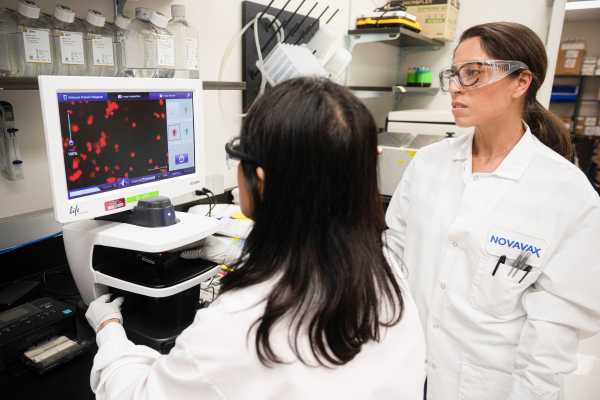
A guide to the vaccines and drugs that could fight coronavirus
The most promising medical solutions to Covid-19 show what’s wrong with our approach to outbreaks.
By
Julia Belluz, Umair Irfan, and Brian Resnick
Updated
Mar 27, 2020, 11:45am EDT
Share this story
-
Share this on Facebook
-
Share this on Twitter
-
Share
All sharing options
Share
All sharing options for:
A guide to the vaccines and drugs that could fight coronavirus
-
Reddit
-
Pocket
-
Flipboard
-
Email
Part of
The Vox guide to Covid-19 coronavirus
The global race to make a vaccine and treatment for the Covid-19 coronavirus is well underway as the epicenter of the pandemic is now shifting toward the United States.
The virus has already shown it has the potential to kill — particularly vulnerable groups, like older adults and people with underlying health conditions. But people of all ages are at risk of severe illness and death.
The virus is also highly contagious. And there’s a lot we don’t know about it since it was only discovered mere months ago. For these reasons, the World Health Organization (WHO) declared Covid-19 a global public health emergency back in January (and later said it had become a pandemic).
As this new virus makes its way around the globe, the public health tools we have to control its spread are blunt, often not implemented correctly or fast enough. They’re already having big economic and social side effects. Health officials are relying on tactics like quarantines and social distancing while hospitals (which fear equipment shortages) are using oxygen and fever reducers, like ibuprofen, to treat people.
The good news is that the world is in better shape to come up with a medical solution — a coronavirus drug or vaccine — than it’s ever been. Within a couple of weeks of discovering the outbreak, Chinese scientists sequenced the virus’s genome and shared it with the world. The structure of the virus was revealed shortly thereafter. These developments now hold the key to creating what could end this outbreak for good: vaccines and pharmaceutical treatments.
Related
Coronavirus in the US: Tracking cases and deaths
Many of the vaccine and drug development efforts underway are building on past efforts to deal with other viral outbreaks, including coronaviruses like MERS and SARS — which means researchers had a head start with Covid-19.
The bad news is that these efforts will likely face the perennial hurdles of medical innovation: long timelines (particularly for vaccines, since they’re used in healthy people), fickle funding, and changing political priorities. On March 6, international researchers put out an “urgent call” to raise $2 billion for vaccine development against Covid-19. It’s all a reminder that we need a better way to keep up consistent pressure against sporadic but deadly threats.
In the meantime, here’s the state of play for some of the most promising approaches. We’ll walk through key vaccines and drugs in development, the new technologies and collaborations behind them, and how far they are from reaching humans.
We’ll be updating this story as progress evolves.
There are dozens of vaccines in the pipeline to prevent Covid-19. These are some of the most promising ones.
One of the most important funders of international vaccine research is the Coalition for Epidemic Preparedness Innovations, or CEPI, a public-private partnership that launched in 2017. Its raison d’être: to award grants for swift vaccine development targeting emerging threats that the pharmaceutical industry might otherwise ignore.
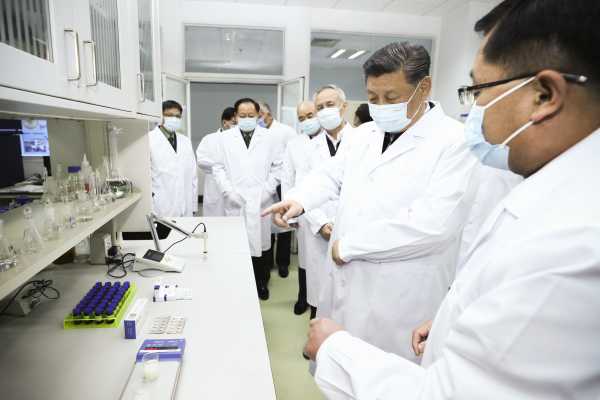
Only three months into this outbreak, CEPI is a large part of why there are already dozens of Covid-19 vaccine candidates making their way through animal and human trials as well as platforms to develop more. US government funding — in particular through the Biomedical Advanced Research and Development Authority (BARDA) — has also been streamlining the process for many manufacturers.
As public health efforts try to mitigate the spread of disease, it may take a vaccine to bring the outbreak under control. “If we can have an effective vaccine that is rolled out to the population at some point,” Tara Smith, an epidemiologist at Kent State University, says, “the level of [infection] in the population then would probably drop precipitously.” Among the potential vaccines with the most buzz:
1) The biotech company Inovio Pharmaceuticals and its partner Beijing Advaccine Biotechnology were awarded a CEPI grant to develop a Covid-19 vaccine candidate, INO-4800. Inovio is notable because it already has a promising (and CEPI-supported) vaccine for MERS — a coronavirus that’s closely related to Covid-19 — going through human trials.
INO-4800 is in the preclinical phase of testing, meaning it hasn’t yet been tried in humans. The company is aiming to test on people later this year. It uses a “DNA vaccine” approach, meaning INO-4800 delivers synthetic genes into a person’s cells. Those genes code for proteins that should, in theory, ramp up the recipient’s immune response to Covid-19. The company also received a $5 million grant from the Bill & Melinda Gates Foundation to develop a device to deliver the vaccine through the skin.
2) After MERS and SARS emerged, “It was clear coronaviruses were going to be a threat,” says Barney Graham, the deputy director of the Vaccine Research Center at the National Institute of Allergy and Infectious Diseases (NIAID). Over the past few years, NIAID has been studying the molecular structure of this family of viruses, he says, and devising plans to quickly create vaccines against them.
It’s paid off: Another CEPI-funded contender is mRNA-1273, from the NIAID and the biotech company Moderna. Theirs is an mRNA vaccine; mRNA is short for “messenger ribonucleic acid,” the molecules that instruct cells to make particular proteins.
Like Inovio’s DNA vaccine, this mRNA technology injects snippets of genetic code into a person’s muscle so that the muscle cells start producing the viral protein themselves. “The mRNA is just delivering the instructions for how your cell can make that [virus] protein,” Graham explained. “And once it’s made, then the immune system takes over and does its thing.”
The vaccine is further along than Inovio’s. A phase 1 clinical trial to demonstrate the safety of the vaccine is now underway.
The hope is that mRNA vaccines can be more potent than older approaches and lead to rapid, cheaper manufacturing. And because they don’t use live viruses, they’re potentially safer, too. So if approved, mRNA-1273 would be the first mRNA vaccine licensed in humans and mark the debut of a new, fast-to-develop vaccine technology.
Graham points out that the speed of development isn’t an accident: The National Institutes for Health (NIH) has been preparing for coronaviruses. But if “it was some other type of virus, like a bunyavirus or an arenavirus, something that we did not have as much information on … we could not have responded this fast,” he says.
3) The biotech firm CureVac is also working on a CEPI-funded mRNA vaccine, which would work in a similar fashion as the one being developed by Moderna and NIAID. “We are very confident that we will be able to develop a potent vaccine candidate within a few months,” said CureVac CEO Daniel Menichella in a press release.
That confidence comes from the fact that the company has tried a rabies mRNA vaccine in humans. “We were able to immunize all participants with a very low dose,” Menichella said. “On this basis, we are working intensively to achieve a very low dose for the CoV vaccine as well.” But this candidate is still in the preclinical phase of development.
Company officials also said that they expect their vaccine could be available as soon as this fall. CureVac recently made headlines when the Welt am Sonntag reported that President Trump offered the company money to move to the United States and gain exclusive rights to their work. German government officials confirmed the reports, but the US government and CureVac denied that such an offer was ever made.
4) Johnson & Johnson’s Janssen is exploring a less experimental approach to prevent the Covid-19, the disease caused by the novel coronavirus. With help from BARDA, it’s developing a vector-based vaccine, a method that led to the effective Ebola vaccine.
Essentially, it’s built off a nonreplicating virus (or viral vector) with a bit of coronavirus genetics added in. The vaccine would be injected into a person’s muscle, where the injected virus generates a protein. If that protein folds correctly (and achieves the correct shape), it can provoke an immune response. And the virus that’s used as a vector cannot get anyone sick — though this vaccine is still in the preclinical research phase, meaning it hasn’t yet been tried in humans. “We expect to start human trials in autumn of this year,” says Hanneke Schuitemaker, head of viral vaccine discovery at Janssen. The company expects to begin phase 1 trials of its vaccine before the end of the year.
5) Yet another approach comes from Sanofi Pasteur, which is also working with BARDA. Instead of taking a viral protein produced in the human body and injecting it, Sanofi is manufacturing a version of the protein. Sanofi already produces a flu vaccine in this manner, so it could potentially ramp up production of a coronavirus vaccine quickly — though the company expects it might be some time before it could be tested in people. “We hope to be in human [trials] within a year,” said Sanofi’s head of global vaccine research and development John Shiver.
6) GSK is sharing its proprietary adjuvants — ingredients added to some vaccines to boost their effectiveness — with a Chinese biotech company called Clover Biopharmaceuticals and the University of Queensland, through a collaboration with CEPI. These partnerships aim to get Covid-19 vaccine candidates “into clinical testing as quickly as possible,” GSK said in a statement.
7) With the help of an NIH grant a few years back, the vaccine research center at Baylor College of Medicine developed a vaccine candidate for SARS — again, another coronavirus that’s closely related to the virus that causes Covid-19. In 2016, the Walter Reed Army Institute of Research even manufactured the shot. But “by then, interest in a coronavirus vaccine was basically gone,” Baylor’s Peter Hotez explained. So the vaccine never made its way through clinical trials and onto the market.
When Hotez and his colleagues began watching the Covid-19 outbreak unfold in early January, they realized there might be a new use for their vaccine. SARS and the novel coronavirus are “about 80 percent similar in their amino acid and genetic code, and they bind to the same receptor,” Hotez said. He and his colleagues are now appealing for funding to move the vaccine into phase one trials to test for safety in healthy volunteers. “Then you’d move it to an area where there’s community-level transmission” to test whether it makes a difference in stopping an outbreak.
What might slow down Covid-19 vaccine research
One of the hard-learned lessons of the 2014-16 Ebola epidemic, which killed 11,000 people, was that lifesaving vaccines for diseases affecting low-income people can languish in development. With Ebola, there had been work on experimental vaccines, but there was no business incentive for companies to actually complete the testing and produce one. The eventual development of an Ebola vaccine, approved in 2019, happened, thanks to generous donors and a big push by the WHO; it’s now being used to fight outbreaks.
These lessons drove the creation of CEPI. But Baylor’s experience shows that even if vaccine development for emerging threats has sped up dramatically, it’s still not quite fast enough. Ideally, we would have had a coronavirus vaccine ready in time for this outbreak and there would be a process in place to test in areas where the virus is circulating.
“Now that we’ve got all this technology, in theory, we should be able to make a vaccine in response to an imminent pandemic threat,” Hotez said. “But we still don’t have a lot of experience doing this.” So some of the dozens of vaccines in the pipeline are still going to be held back by delays in getting funding and getting approvals for testing, not to mention the ebb and flow of political interest.
Even without these challenges, developing vaccines is an intensely hard science. All the different approaches are trying to do the same thing: Introduce a tiny piece of coronavirus protein into the human body so that the immune system can learn what a coronavirus “looks” like. If a vaccine can tell the immune system to seek out and destroy this protein, the body is immune to the virus. But actually finding the perfect immune trigger — and then proving it is safe enough to use in healthy people — can take years.
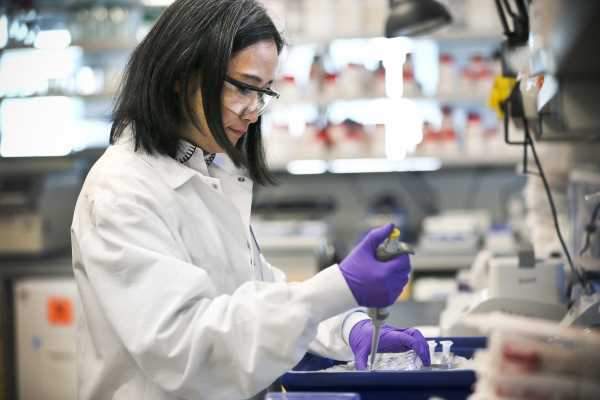
That brings us to an additional stumbling block all these vaccines will face: a problem called immune enhancement, or vaccine enhancement. It was discovered in the 1960s when a vaccine candidate for a different respiratory virus — RSV — was being tested and researchers found it actually worsened the disease after people were exposed to the virus, even killing two test subjects. “This soured a generation of research into RSV vaccines,” Hotez said. And it raised questions about whether other vaccines for respiratory diseases might pose the same threat. While there’s now a push to understand the immune enhancement phenomenon, it might pose a problem for new Covid-19 vaccines.
“Everyone talks about [having a vaccine] 18 months or a year from now,” Hotez said. “We just have to proceed with caution and convince the regulators [in the US, the Food and Drug Administration] this isn’t going to be an issue.”
Related
11 questions about the Covid-19 coronavirus outbreak, answered
Still, if a vaccine arrives a year or so from now, it could still be useful. “We don’t know what’s going to happen with this virus,” Graham says. “We don’t know if it will go away like SARS did, or we don’t know if it will be coming back around every winter. So our job is to try to develop interventions that could be used if it gets worse. … We need ways of protecting ourselves.”
Funding could be another obstacle. Richard Hatchett, CEO of CEPI, said that there have been fresh cash injections into the vaccine research effort, but they aren’t enough. “[T]hese funds will be fully allocated by the end of March and without immediate additional financial contributions the vaccine programs we have begun will not be able to progress and ultimately will not deliver the vaccines that the world needs,” he wrote in a statement Friday.
Research on new drugs is underway to treat people who have contracted Covid-19
It could be a year or more before a Covid-19 vaccine is cleared for use. But that doesn’t mean other treatments won’t arise sooner.
As with vaccines, scientists are investigating dozens of drugs to treat Covid-19, building on past work treating other viruses and diseases, from SARS to HIV. The current approach is a bit like throwing lots of things at a wall and seeing what sticks. According to the Milken Institute, there are 75 treatment protocols for Covid-19 in development.
Some of these drugs and treatments have already gone through human testing, so they may arrive sooner than if researchers started designing new drugs from scratch.
There are a couple of main drug-based treatment approaches to Covid-19: attacking the virus directly and boosting the body’s immune response. Let’s walk through them.
1) Antivirals: These are drugs that fight off viral infections, usually by attacking the viruses themselves.
By attacking different parts of the virus, antiviral compounds can prevent a virus from entering cells or interfere with its reproduction, slowing or stopping an infection, explained Pei-Yong Shi, a biochemistry and molecular biology professor at the University of Texas Medical Branch.
One new drug that might be able to do this is called remdesivir, under development by Gilead Sciences. There are five different clinical trials underway for the drug. In the United States, remdesivir is undergoing a clinical trial at the University of Nebraska Medical Center, sponsored by NIAID. And it has already been administered under compassionate-use guidelines that allow some patients to use experimental drugs if no other options are left.
Remdesivir works by interrupting the SARS-CoV-2 virus as it copies its genetic material, which in turn stops the virus from reproducing. What’s clever about remdesivir is that it disrupts the virus but not the human cell, so it has a targeted effect.
The WHO is bullish about this approach. “There is only one drug right now that we think may have real efficacy, and that’s remdesivir,” said WHO Assistant Director-General Bruce Aylward at a press conference. But remdesivir still needs to go through clinical trials before it can be used widely.
2) Immune system boosters: The human body has powerful built-in infection fighters, but a virus can still cause a lot of damage and spread to other people before the body can spool up its natural defenses. So researchers are investigating treatments that help the human immune system quickly lock on to the SARS-CoV-2 virus and mount a counterattack.
When a virus invades the body, a type of white blood cell known as a B cell generates antibodies. These are proteins that bind to specific parts of an invader or an infected cell, flagging the target for destruction by other cells. They can also block a virus from infecting a host cell.
Regeneron, a biotech company, is developing a set of therapeutic antibodies that can be administered to a patient and help their immune system counteract SARS-CoV-2 right away. These antibodies are generated from mice engineered to have genetically human immune systems, which means they produce human antibodies.
“It’s a very robust approach,” said Christos Kyratsous, vice president for infectious disease research and viral vector technologies at Regeneron.
Kyratsous added that the premade antibodies can be used prophylactically to prevent infection as well as therapeutically to treat the disease. The recipient can also retain protection from the virus for several months, but the treatment does not lead to lifelong immunity.
Right now, Regeneron is screening thousands of antibodies made from its engineered mice to the SARS-CoV-2 virus and is aiming to start human trials by the end of the summer. The company is also partnering with Sanofi in phase 2 and 3 trials of an antibody drug known as sarilumab.
Vir Biotechnology is another company also investigating antibodies to treat Covid-19. But rather than drawing on engineered mice, the company is sorting through antibodies collected from people who survived related coronavirus infections like SARS.
Some old treatments may get a new life with Covid-19
There are trials underway using existing drugs as well. The key advantage of using an off-the-shelf therapy is that it’s already gone through testing to show it’s safe for human use and just needs to be tested for effectiveness against a new target. That means these treatments could potentially get deployed against the SARS-CoV-2 virus even faster than a new drug.
Japan is looking into using HIV drugs to treat Covid-19. These include antivirals like lopinavir and ritonavir. Doctors in Thailand reported success in treating patients using a combination of HIV drugs alongside oseltamivir, a drug sold under the brand name Tamiflu to treat influenza.
Like coronaviruses, HIV uses RNA as its genetic material, so these different viruses may be using similar enzymes to function and reproduce. It’s possible the drugs that inhibit HIV could do similar things to SARS-CoV-2 — but it’s not certain, which is why scientists are testing to see if they work on the new virus. A recent study in China in 199 patients cast doubt on the promise of HIV drugs, finding that “no benefit was observed with lopinavir–ritonavir treatment beyond standard care.”
There are also general treatments for viruses that are not specific to Covid-19, but they come with trade-offs.
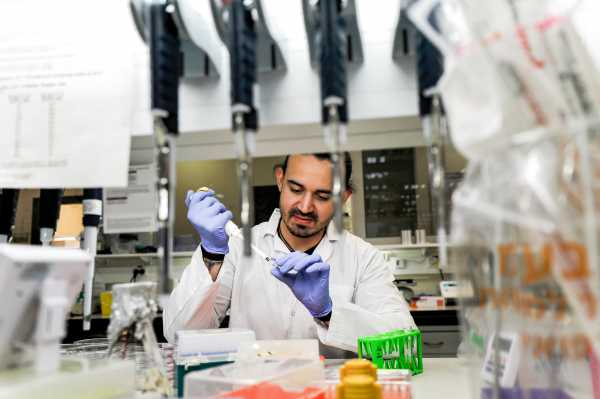
To boost the immune system, physicians can use drugs like interferons. These are signaling proteins that serve as alarm bells in the body, activating an immune response. Interferons have been used to treat autoimmune diseases and viral hepatitis. “It’s a double-edged sword,” said Shi from the University of Texas Medical Branch. “If you activate them at the wrong time or if you activate it too much, it causes a lot of inflammation, which can cause disease.”
So to treat a virus, doctors have to balance attacking the virus directly without causing any collateral damage to the body, or they have to strengthen the body’s defenses while preventing the virus from causing even more harm. Interferons have already been used to treat Covid-19 cases in China, but it’s unclear how effective they are on their own.
Some scientists think interferons combined with other drugs could be more effective against Covid-19. For instance, researchers in the United Kingdom are investigating interferon treatments coupled with anti-inflammatory medicines. In Saudi Arabia, scientists are testing interferons alongside lopinavir and ritonavir.
On the other hand, Covid-19 can trigger an immune system overreaction, leading to dangerous symptoms like severe lung inflammation, so scientists are investigating drugs that can tamp down the immune response. For example, China’s National Health Commission said that it is testing the anti-arthritis drug Actemra in Covid-19 patients to help treat inflammation from the virus.
Recently, anti-malaria drugs have received a lot of attention as potential Covid-19 treatments. In particular, President Trump took to Twitter to promote hydroxychloroquine, a derivative of the anti-malaria drug chloroquine. Hydroxychloroquine may have anti-viral and anti-inflammatory properties, but testing has been sparse. A French study seemed to show that it shortened the recovery time in patients, but the drug was only administered to 26 patients in the study, and the trial wasn’t randomized. A randomized trial of hydroxychloroquine in China did not find a difference in recovery rates.
Hydroxychloroquine can also have dangerous cardiac and psychiatric side effects, so it isn’t something that can be simply given to everyone. And Trump’s boosting has helped fuel a shortage of the drug, which is also needed by patients to treat arthritis and lupus. Nonetheless, there are at least 13 clinical trials of the drug to treat Covid-19 that are pending or underway.
We need to start preparing for the next big, deadly outbreak now
The race to develop a treatment and vaccine for the novel coronavirus illustrates just how much science builds on past efforts, like the responses to MERS, SARS, and the Ebola virus.
But it also shows that persistent research attention matters even after an outbreak dissipates. A disease that spreads to thousands of people in days can do a lot of damage in the months or years it takes to create a treatment or vaccine, so an existing body of research can save lives.
“What needs to be done for the viruses that we don’t understand as well — that still have pandemic potential — is just fill in the database, to study those viruses, understand the structure of their proteins, understand the way antibodies work against them,” NIAID’s Graham says. At the very least, researchers and drug companies should “develop one prototype [vaccine] within each [viral] group all the way through a clinical trial. And then either it goes on the shelf or it’s recorded in the literature, so that you have that information available when things like this happen.”
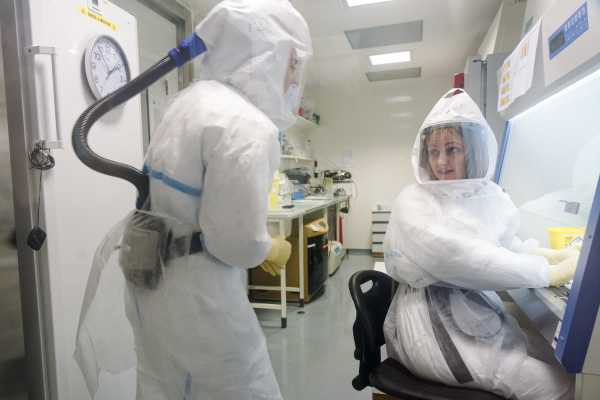
Again, with Covid-19, we were a bit lucky: Because of the SARS and MERS outbreaks, scientists had previously dedicated themselves to studying how to build a coronavirus vaccine and treat the diseases.
However, preparing for a future epidemic is a tough sell to a for-profit drug company, even with new funders like CEPI. Companies must invest huge amounts of money and time in coming up with a response and then somehow recover that investment, even if the outbreak never arrives. Planning for pandemics takes political will and foresight.
“At least in most of the world, vaccine and antiviral development is done by for-profit companies,” Vincent Racaniello, the Columbia University immunologist, says. “They will not make a vaccine or an antiviral if they don’t have a sufficient market. And I think that that’s the wrong model. And so we have to change their models. We have to have government-supported research that will bring the vaccine to a point where if there is an outbreak, it can be quickly manufactured and used.”
Sourse: vox.com





